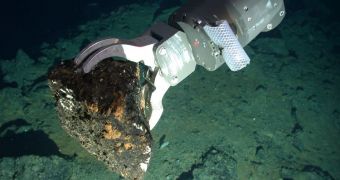According to the conclusions of a new research paper, it would seem that oceanic crust forms a lot slower than scientists first calculated, but in a more dynamic manner. Past studies found that as many as 4 cubic miles (16.67 cubic kilometers) of crust are forming under Earth's oceans each year.
But research scientist Matthew Rioux, from the Department of Earth, Atmospheric and Planetary Sciences (EAPS) at the Massachusetts Institute of Technology (MIT), in Cambridge, found this formation rate to be much lower.
Details of the investigation appear in the latest issue of the top journal Nature Geoscience. Studies such as this one are important because as many as 60 percent of Earth's crust lies under the waves, making up the bottom of seas and oceans.
Underwater mountain ranges of sorts, called mid-ocean ridges, are the locations through which new oceanic crust is being pushed up from the planetary mantle. The latter is a layer of viscous, molten magma, on which all tectonic plates float.
Previous investigations have determined that not all ridges produce new crust at the same rate. Some of them can produce 2 inches (5 centimeters) of crust annually, whereas others can churn out as many as 6 inches (15 centimeters) during the same interval.
The process of forming new ocean crust is called seafloor spreading, and geologists say that it's relatively well understood. What experts had trouble explaining was what happens inside the volatile deep-sea environment that produces the new crust.
Rioux characterizes the mid-ocean ridge environment as a mush zone made up of crystallized rock and liquid magma. This mixture behaves in a particular manner, so understanding its patterns could potentially provide experts with a better understanding of how oceanic crust actually forms.
“They reached the very surprising result that magma cooling was a much more protracted affair than had been predicted. It's a good ‘first time out’ for a new generation of radiometric techniques applied to the ocean floor,” Jonathan Snow explains.
The expert holds an appointment as an assistant professor of Earth and atmospheric sciences at the University of Houston, in Texas.
“It’s a step forward in our understanding of how these ridges work,” Rioux adds. The expert conducted his work using funds from the Natural Environment Research Council and the US National Science Foundation (NSF).
“Dating of the oceanic crust will allow us to better understand how much variation there is between different mid-ocean ridges, how those variations relate to tectonic setting, and ultimately what the data tell us about the magmatic processes during formation of a very large fraction of the Earth's crust,” he concludes.

 14 DAY TRIAL //
14 DAY TRIAL //